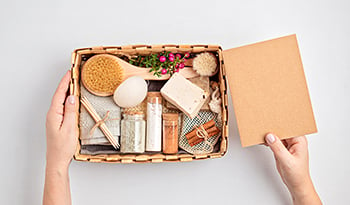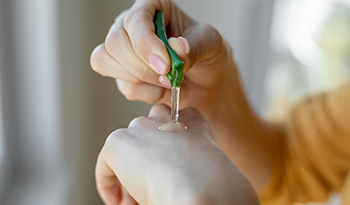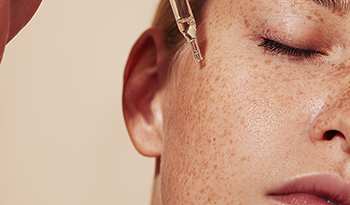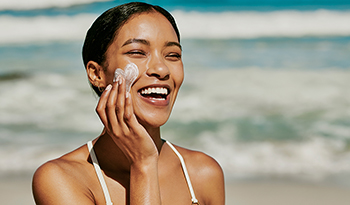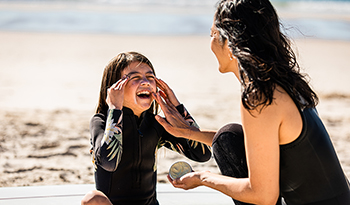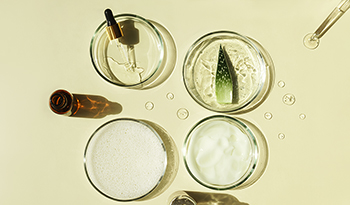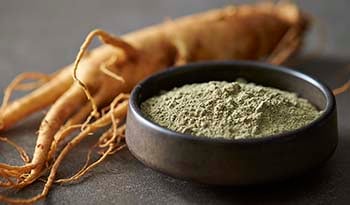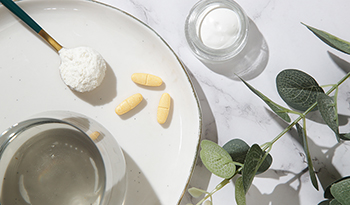Her On Yıl İçin En İyi Yaşlanma Karşıtı Tavsiye

Cilt bakım ihtiyaçları yaşlandıkça değişir. 20'li yaşlarındayken, ürünler ve önleyici tedbirler 40'larındakilerden oldukça farklıdır. Bu kılavuz, cildinizin her on yılda karşılaştığı benzersiz zorluklarla başa çıkmanıza yardımcı olacak, böylece ne kadar güneş alacağınız ve cildinizin nemini nasıl koruyacağınızgibi seçimler yapabilirsiniz. Doğru seçimleri yapmak, daha sonra sahip olmayabileceğiniz uzun cilt güzelliği için seçenekler sunabilir.
20'li yaşlarda cilt bakımı
Yirmi yaşındaki insanların kendine özgü cilt sorunları vardır. Hala gençlik yıllarından kalan sivilceleri olabilir. Eğer aktif olurlarsa, güneşte çok zaman geçirebilirler. Ve ciltleri henüz yaşlanma belirtileri göstermediğinden, önleyici bakım hakkında düşünmüyor olabilirler.
Şekeri azaltmak, yüksek glisemik yiyecekleri ve abur cuburları 20'li yaşlarındaki sivilcelere yardımcı olabilir. Cildinizi aşırı kurutmamak da önemlidir. Yağlı cilde ve siyah noktalara sahip olanlar, tıkanmış gözeneklere yardımcı olmak için periyodik olarak kullanılan ince parçacık içeren peeling sabunu tolere edebilir. Doğal A vitamini ürünleri, daha güçlü reçeteli ürünlere ihtiyaç duyulmazsa yağlı, akne eğilimli ciltlerde gözenekleri temizlemeye de yardımcı olabilir. kil maskeleri ve çizim kil lekesi tedavileri, uçucu yağlargibi antimikrobiyal topikaller ve niasin içeren kremler dahil olmak üzere birçok doğal topikal akne ürünü mevcuttur. Kızarmış yiyeceklerden, süt ürünlerinden ve hassasiyetleri ve alerjileri tetikleyen yiyeceklerden kaçınmak, sindirim problemlerini gidermenin yanı sıra da yardımcı olabilir.
Güneş yanığından kaçınmak, daha sonra ortaya çıkacak cilt hasarı yaratmamanın anahtarıdır. Dışarıda çok fazla zaman geçiren ve sonuç olarak bronzlaşanlar en azından kızarıklık ve yanma ve aşırı maruz kalmaktan kaçınmalıdır. Doğrudan güneş ışığından kaçınmak, güneş koruyucu giysiler giymek, güneşi gölgeleyen şapkalar giymek ve gölgede kalmak güneşten korunmanın başlıca biçimleri olmalıdır. Doğal güneş koruyucuları ikincil önleme için önemlidir. Yeni güneş kremlerinden bazıları ayrıca vitamin ve bitkisel antioksidanlar içerir ve ağızdan antioksidan alınmasının yanı sıra iyi koruma elde edilebilir. Not: Güneşte saatler geçirirseniz bunlar pek yardımcı olmaz.
Aşırı banyo yapmaktan ve sert sabunlardan kaçının ve kuru cildiniz varsa banyodan sonra ıslakken cildi nemlendirin. Kremler en rahatlatıcı olabilir. Yağlar ve merhemler çok daha az bileşene sahiptir, koruyuculara ihtiyaç yoktur ve alerjiye neden olma olasılığı daha düşüktür. Denemek için bazı seçenekler şunlardır:
- Hindistan cevizi yağı
- Badem yağı
- Balmumu ile veya balmumu içermeyen zeytinyağı
- Jojoba yağı
- Argan yağı
- Shea yağı
30'lu yaşlarda cilt bakımı
Güneş hasarı ve doğal yaşlanma değişiklikleri 30'lu yıllarda ortaya çıkmaya başlar. V boyun bölgenize ve yüzünüze dikkat edin - bunlar güneşe en çok maruz kalan ve önce hasar göstermeye başlayan bölgelerdir. Bu bölgeyi kaplayan bir fular veya güneş kremi, on yıl daha genç görünmesini sağlayabilir.
Çoğunlukla doğum kontrol hapları veya gebelikile ilişkili artan pigment alanları da ortaya çıkabilir. Sıkı güneş koruması, şapka ve güneş koruyucuları kullanmak önemlidir. Antioksidan vitaminler ve takviyeler oral ve topikal olarak biraz yardımcı olabilir. Böylece genel olarak iltihabı azaltabilir.
Koyu halkalar gözlerin altında görünmeye başlayabilir. Uyku eksikliği, böbrek stresi veya mevsimsel alerjiler gibi nedenini ayırt etmek önemlidir. Alerjenden kaçınma, toz filtreleri, gıda alerjilerini kontrol altına almak ve quercetin ve ısırgan otu almak, toz ve polen alerjilerinin neden olduğu koyu halkalarda yardımcı olabilir.
Varisli damarlar ve örümcek damarları için bacaklarınıza dikkat edin. Genellikle hamilelik ve ayaklarınız üzerinde durmak veya çok uzun süre oturmak nedeniyle şiddetlenir. Ayaklarınızı kısa bir süre kalbinizin üzerine çıkarmak, kompresyon çorapları ve C vitamini, at kestanesive diğer biyoflavonoidler gibi takviyeler yardımcı olabilir. Bu takviyeler, yüz ve bacaklardaki ince kan damarlarının görünümünü azaltmada çok renkli meyve ve sebzeler açısından zengin bir diyete ek fayda sağlayabilir.
Yüzünüzü ve göz çevresini nemlendirmek önemlidir. Cildinizi aydınlatmak için ölü cildi temizlemeye yardımcı olmak için alfa hidroksi asitlergibi meyve asitleri içeren bir temizleyiciye ihtiyacınız olabilir.
40'lı yaşlarda cilt bakımı
Güneşte vakit geçirirseniz, 40'lı yaşlarınızda V boyun bölgenizde hasar görmeye başlayabilirsiniz. Güneş kremleri, bu alan için eşarplara ve koruyucu giysilere önemli bir katkı olmaya devam etmektedir., ayrıca aşağıdakiler de dahil olmak üzere topikal ve oral antioksidanların yanı sıra:
- Biyoflavonoidler , narenciye veya nardakiler gibi, oligomerik proantosiyanidinler (OPC'ler) , piknogenol (çAM kabuğundan) dahil olmak üzere üzüm çekirdeği veya mor meyvelerden elde edilen oligomerik proantosiyanidinler (OPC'ler) .
- Resveratrol
- C Vitamini
- Alfa lipoik asit
- N-asetil sistein
- E vitamini
- Yeşil çay özü
A vitamini, retinolveya reçeteli retinoller cildi kalınlaştırmak, pul pul dökülmek ve cildi dolgunlaştıran ve ince kırışıklıkları azaltan hafif ödemlere neden olmak için daha önemli hale gelir. Küçük moleküler ağırlıklı hyaluronik asit cilde nüfuz edebilir ve suyu tutmak için nemlendirici görevi görebilir ve hatta muhtemelen yaşla birlikte kaybolan doğal hyaluronik asidi artırabilir.
40'lı yaşlarınızın ötesinde cilt bakımı
yaşlanma ve hormonal değişikliklerle, ciltteelastik liflerin yanı sıra kolajenkaybı olur, ancak cilt hala oldukça normal gerginliğe sahiptir. Yüz ifadesi ve hatta yüz egzersizleri arasındaki bu gerilimi 40'lı ve 50'li yaşların ötesine geçerken korumak önemlidir, çünkü bu, fibroblastları kolajen üretmeye devam etmeleri için uyarır. Özellikle altta yatan kasları sıkılaştırmak için uyaran bazı “peptitler” ve kolajen oluşumunu teşvik eden diğerleri vardır. Peptit içeren kremlerin düzenli kullanımı yaşlanma değişikliklerini yavaşlatabilir. Yeterli protein alımı, çinko ve bakır gibi minerallerle birlikte kolajen üretimi için önemlidir. Bakır peptit, bazı yaşı azaltıcı kremlerde, kolajen üretimine yardımcı olma üzerindeki olası etkileri nedeniyle bulunur.
Ellerde 60'lı yaşlarda ve sonrasında kahverengi lekeler ve yaşlanma değişiklikleri görülür, ancak hasarın çoğu çok daha erken yapılır. Bisiklet, golf, kano veya bahçecilik gibi açık hava etkinliklerinden hoşlanıyorsanız, sadece ellerinizi spordan korumakla kalmayacak, aynı zamanda güneşi ellerinizin arkasından uzak tutacak uygun spor eldivenlerini giydiğinizden emin olun. Bir dizi doğal bitki özü ve diğer ürünler, birkaç ay boyunca düzenli olarak uygularsanız koyu lekeleri ağartmaya yardımcı olabilir. Bunlar arasında hem kağıt hem de beyaz dut özü, meyan kökü ekstresi, yabanmersinden arbutin ve kojik asit bulunur.
Her on yılda, aşağıdakiler de dahil olmak üzere faktörlerin bir kombinasyonundan kaynaklanan cilt değişiklikleri ortaya çıkar:
- yaşlanma
- güneş ve radyasyon hasarı veya diğer oksidatif hasar
- inflamasyon
- birikmiş kimyasal toksisite
- fiziksel hasar
- enfeksiyon
- vitamin ve mineral eksikliği
- aile öyküsü
Bu faktörleri önleme ve düzeltme konusunda proaktif olmak, cildinizin 70'lerinize kadar genç ve sağlıklı görünmesini sağlamada uzun bir yol kat edebilir.
FERAGAT:SAĞLIK MERKEZİ tanı koymayı hedeflememektedir...













































































 İçindekiler
İçindekiler



